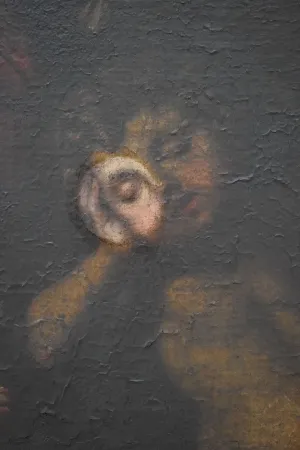Conservation Philosophy and Ethics
From Invisible Rooms to Roman Fakes
Our first Conservation and Philosophy Symposium back in November 2020 explored the intersections and interactions between the two disciplines, providing an opportunity to bring the insights of philosophy to conservation debates around topics including plaster casts and replicas, the re-creation of modern artworks, the reasons why works of art are restored or seen as over-restored, the anthropology of forgery - and many other issues.
A special issue of Studies in Conservation was published in early 2022 with reviewed papers from the Symposium. IIC members have FREE access to the papers published online.
Socratic Dialogues 2023-24
You can find further information about follow on events for 2023 - 2024 linked to this theme, including a series of Socratic Dialogues hosted by IIC Fellow, Bill Wei, by logging into the IIC Community platform which are designed to support students and early career professionals.
From David Scott's Introduction to the Symposium
"Authenticity is an important concept for debating the nature of art and art restoration, and I would like to point out a few issues with that in mind.
As the philosopher Denis Dutton remarked, authentic is a word whose meaning remains uncertain until we know what dimension of its referent is being talked about. For conservation we have many dimensions and I think that the best way to tackle this problem is to talk of authenticity as a triangular set of relationships between: material authenticity, intangible authenticity and historical-aesthetic authenticity. By doing that we can talk about the process of authentication, which largely depends on material authenticity, or in the case of modern art, it depends on the certificate of authenticity itself.
Consider Ives Klein’s work, The Room of Immaterial Pictorial Sensibility from 1961. Here Klein exhibits an empty room, as his recent paintings have been declared to be invisible. In order to exhibit this work legitimately, it is the certificate of authenticity that would be necessary, as the work itself possesses only an intangible authentic presence.
In other cases there are works, such as Renaissance marble fakes of Roman copies of Greek bronze sculpture, where we value the historical-aesthetic authenticity, even if materially, the Renaissance copy is made from materials not representative of Roman origin. I will not go on here, but I hope that you get the picture: that there is no such thing as “authentic” but there are authenticities which can be further elaborated.
That has a bearing on some of our contributions here, which consider the integration of philosophical tools for authenticity, the notions of originality, objectivity and subjectivity in conservation, and the educational role of authentic copies. "
A Selection of Papers and Abstracts Published in the Special Issue
Abstracts of the listed papers are open to all - IIC members can read the whole papers free with membership.
Image: Reconstructed ceramic bowl in pink, next to an untreated broken bowl. Treatment undertaken by Sweetnam, E. Photo: Sweetnam, E.
Sweetnam, E & Henderson, J. Disruptive Conservation: Challenging Conservation Orthodoxy
Marcal, H. Becoming Difference: On the Ethics of Conserving the In-Between
Salvadori, M et al. The Anthropology of Forgery: New Themes for the Contemporary Archaeologist
Kapelouzou, I. Conservation and the Ethics of Unintentional Forgery
Giombini, L. Respect in Conservation Ethics: A Philosophical Inquiry
Sampatakos, A & Chatzigiannis, D. Exhibiting Loss: A Preliminary Study of the Presentation of Byzantine Icons in Greek Museums
Our Authenticity & Ethics Special Interest Community
Please do join IIC as a member to take part in the Special Interest Community for Authenticity and Ethics, championed a by IIC Fellows Jonathan Ashley-Smith (focusing on ethics) and David Scott (authenticity). This Special Interest Community considers the current state of debate in the profession. Among other topics, it asks how we make judgements when forced to choose between preserving original material and the traditional appearance of objects.

Image: 34. Cupid with surface dirt. 35. Circle on a plane. Photo: Williamson, J.